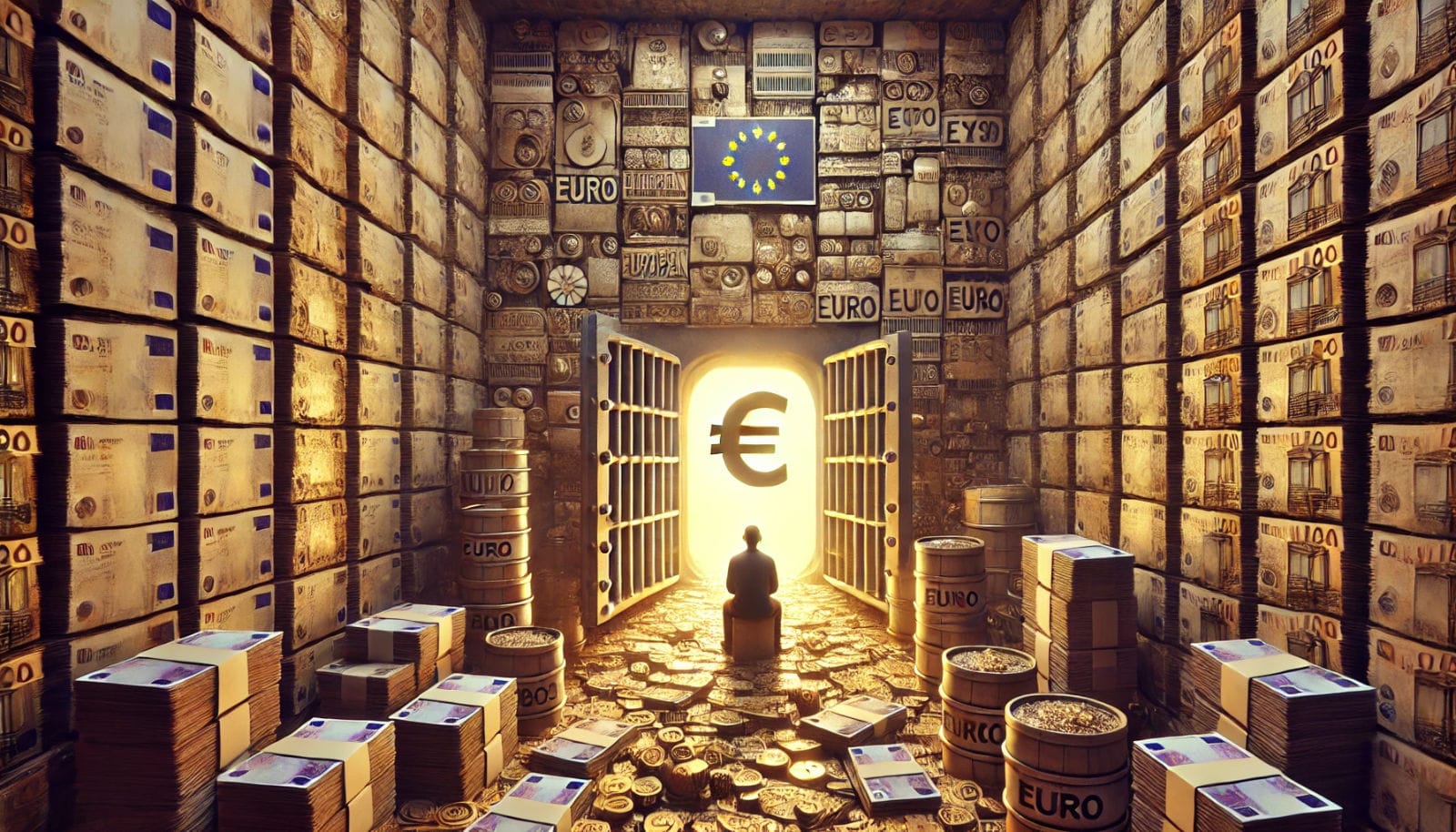Trapped in Debt
Bonds are eroding wealth—Dutch pensions hold €1,400B in debt paper yielding negative returns. Meanwhile, Strategy’s fixed 10% shares are fueling endless bitcoin buys. Is your money truly safe in today’s outdated investment system?

Peter
It was one of those headlines you’d normally skip: “The majority of investments are in debt paper.” Yet one person couldn’t stop thinking about it. The longer he stared, the higher his eyebrows rose. Debt paper? You mean bonds? Those instruments that have barely delivered returns in recent years while your purchasing power gradually evaporates?
“Majority of investments are in debt paper”
— jeroen blokland (@jsblokland) March 18, 2025
The chills run down my spine when I read this headline from De Nederlandsche Bank about investing in the Netherlands. Dutch companies, institutions, and households had almost €3,500 billion in investments at the end of this year.… pic.twitter.com/CztmzJkRwy
The numbers, sourced from De Nederlandsche Bank, show that Dutch households, companies, and institutions collectively own nearly €3,500 billion in investments. Of that, over €1,400 billion – a striking forty percent – is allocated to bonds. And while that forty percent has posted negative returns over the past five years, Blokland notes that after adjusting for inflation you’ve lost more than 20% of your purchasing power—a loss even steeper than many stock market crashes.
It’s figures like these that fill analysts such as Jeroen Blokland with disdain. Why invest so much in something that not only yields nothing but actively erodes your wealth? His argument is straightforward: the traditional balance of stocks and bonds is outdated, and the Netherlands is drowning in it.
Incidentally, it’s not Dutch individuals who are heavily invested in bonds—it’s their pension funds. Out of the €1,400 billion in bonds, one player stands out: pension funds, holding a staggering €593 billion in debt paper. Banks follow with €323 billion, and insurers with €133 billion. Together, they make up more than 75% of total bond holdings.
And what about Dutch households? They hold less than €5.5 billion in bonds—barely half a percent of the total. Instead, they invest directly in stocks (€61 billion) and indirectly via investment funds (€104 billion). Most Dutch citizens don’t actually choose bonds; they’re simply embedded in their pensions.
Not exactly. While households rarely invest directly in bonds, they very much do so indirectly—through investment funds that include debt paper, or even more fundamentally, through their savings.
It might sound odd, but a savings account is essentially a bond derivative. Banks largely invest their customers’ savings in government and corporate bonds. You may believe your money is “safe” in the bank, but in reality, you’re indirectly lending it to borrowers who pay interest. That’s simply how banks operate.
Another point: for individuals in the Netherlands, bonds are also a fiscal disadvantage. Since bonds are treated as investments, they’re subject to higher tax rates than savings, making direct bond ownership unattractive.
This is where the problem lies. Pension funds invest not for growth but for stability. With long-term obligations demanding certainty, they stick with bonds. Yet in a landscape of persistently low interest rates, ballooning debt, and creeping inflation, that so-called reliability breeds uncertainty. Even if liabilities adjust with interest rates, the gap between a portfolio yielding 5% and one netting 7% is immense—over thirty years, that difference can double the purchasing power of your pension assets.
Bonds may feel safe, but their appeal has long faded. Returns fall below inflation, and the bonus from price gains due to ever-declining rates is gone. Still, we remain trapped in outdated models, bound by rules, regulations, and a collective inertia.
So we continue funneling massive sums into debt paper—not because it’s smart, but because that’s how it’s always been done. Meanwhile, the average citizen makes different choices. They choose ownership, stocks, funds, and opportunities.
Take bitcoin, for example. Despite its youth, it’s increasingly seen as what bonds once were—a hedge against inflation, immune to central control, scarce rather than plentiful. It’s an investment that isn’t risk-free, but one that truly exists outside the system responsible for these towering debts.
Pension funds don’t invest in bonds because they’re fond of them—they do so because the system expects it. And that system has its own internal logic.
Firstly, pension liabilities are highly sensitive to interest rates. When rates drop, the value of these liabilities increases, much like bonds. In theory, assets and liabilities offset each other.
Secondly, pension funds must obey strict rules set by regulators such as DNB. These rules demand a level of “certainty” that essentially requires bond investments. Taking on significant risk isn’t permitted, even if it might pay off in the long run.
Thirdly, bonds traditionally serve as a cushion during stock market downturns. But herein lies the issue: if that hedge fails and returns turn negative, what remains?
It’s time to spark a critical debate—not about whether we invest enough, but whether we invest well. If a nation’s wealth consistently underperforms inflation, the numbers in your investment account don’t ensure real prosperity. In the end, true wealth quietly erodes.
In other parts of the world, this realization is slowly taking hold. American pension funds—for example, those in Wyoming or Fairfax County in Virginia—have already started to cautiously venture into bitcoin and its related infrastructure. Not as a reckless gamble, but as a hedge, a way to finally inject some real potential into their portfolios.

Safety only counts if it actually protects you—from inflation, depreciation, and stagnation. And bonds haven’t done that in years.
Are you Plus-member? Then we’ll move on to the following topics:
- Strategy raises even more money: crazy or brilliant?
- Bitcoin: Korea rejects what America wants
- Solana pulls its anti-woke ad
- SEC starts afresh with crypto regulations

